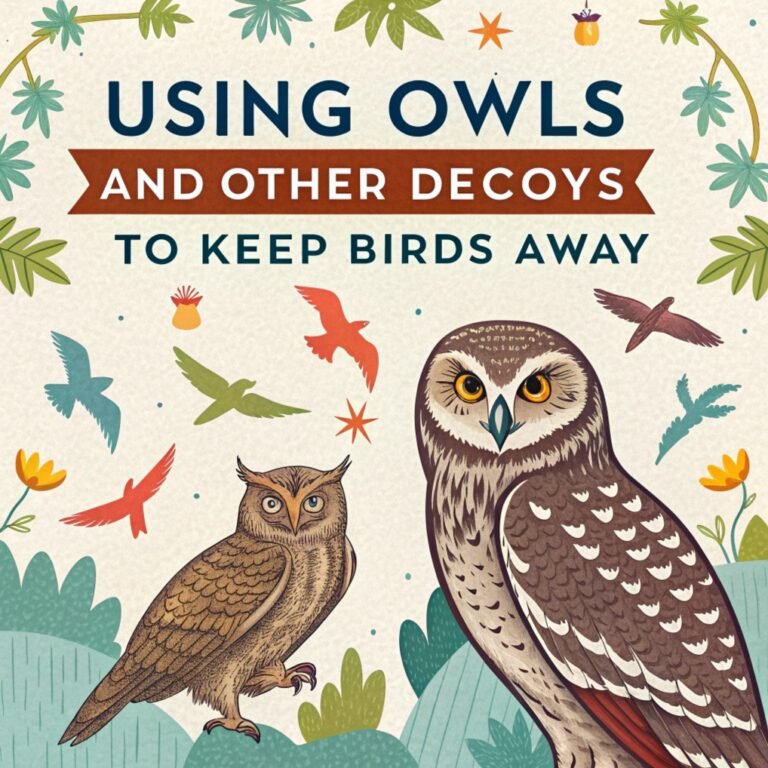California Local Backyard Bird Guide
In your California backyard, knowing local bird species is important for observation. Each bird, like the House Sparrow and American Goldfinch, has specific markings and behaviors shaped by their surroundings. Learning these traits can improve your birdwatching.
You can also observe how feeders and baths attract different birds. This interaction can give you more understanding of local avian life. What other ideas do you have to support a vibrant bird community in your backyard?
Key Takeaways
- Common backyard birds in California include House Sparrows, White-crowned Sparrows, and various finches like American Goldfinch.
- To attract hummingbirds, plant bright nectar-rich flowers and use red or orange feeders filled with sugar-water.
- Identifying songbirds relies on recognizing their unique calls and patterns; keep a journal to track sightings.
- Provide a variety of bird feeders with snacks like sunflower seeds for finches and millet for sparrows to draw diverse species.
- Seasonal birdwatching highlights migratory visitors; spring and autumn are peak times for spotting different breeds.
Common Backyard Birds in California

California is home to many bird species, making it a great place for birdwatchers. Common backyard birds include the House Sparrow and the White-crowned Sparrow. These birds have unique markings and behaviors. Watching them can teach you about local ecosystems.
You can also see various finch types, like the American Goldfinch and the Lesser Goldfinch. These colorful birds brighten your yard and indicate a healthy environment.
Birdwatching strengthens your connection to nature. The sounds and actions of these birds are delightful.
Attracting Hummingbirds to Your Garden
To attract hummingbirds to your garden, focus on their needs. Start by planting bright nectar plants like salvia, bee balm, and trumpet vine. These flowers attract hummingbirds. Use a mix of colors, especially red and orange, to draw them in.
Get quality hummingbird feeders and fill them with a mix of one part sugar to four parts water. Place the feeders close to the nectar plants and clean them regularly to avoid mold.
Hang the feeders in shaded spots to keep the birds cool. A combination of feeders and nectar plants will invite these wonderful birds to your garden and help create connections with other bird lovers in your community.
Identifying Songbirds by Their Calls

Identifying songbirds by their calls can be a fun and engaging activity that connects you with nature. Focus on recognizing different sound patterns unique to each species.
Pay attention to the rhythm, tone, and pitch of the calls you hear in your backyard. For example, a mockingbird's melodic whistle may catch your ear, while the sharp notes of a finch indicate its presence nearby.
Keep a journal to record the birds you identify based on their calls. This practice sharpens your listening skills over time. It also deepens your appreciation for local birds and builds a sense of community with other bird watchers.
Enjoy the process, and let each call add to your experience in the natural world.
The Role of Seed Feeders and Bird Baths
Bird calls create an exciting atmosphere around seed feeders and bird baths in your yard.
These two features are crucial for attracting many types of birds. Offering a variety of seeds helps different species find food. For instance, finches love sunflower seeds, while sparrows prefer millet.
Placing the bird bath correctly is important. Position it close to native shrubs for shelter, but ensure it's visible. Use a shallow basin with sloped sides. This design allows birds to access the water safely, which encourages them to bathe. Bathing keeps their feathers clean and healthy.
By providing seed feeders and bird baths, you support local bird populations and enhance biodiversity in your area.
These elements create a welcoming space, allowing you to connect more with nature while enjoying the beauty of birdwatching.
Attracting Raptors: Hawks and Owls

To attract raptors like hawks and owls to your backyard, focus on their habitat and food needs.
First, provide nesting sites. You can build hawk nesting platforms with sturdy wooden posts or artificial structures in open areas. For owls, install owl boxes in trees.
Next, enhance your yard with native plants and trees. These will attract smaller birds, which serve as food for hawks and owls.
Create a varied habitat with open fields and dense areas for hunting. By meeting the nesting and feeding needs of these raptors, you'll create a welcoming space for them to thrive in your backyard.
Enjoy watching these incredible birds!
Seasonal Birdwatching: What to Expect
As seasons change, different birds visit your backyard. In spring, you'll see migratory birds returning from their winter homes. Common birds include the colorful Western Tanager and the singing House Wren, both eager to build nests.
In autumn, birds migrate south, bringing another wave of visitors.
Joining birdwatching events can connect you with fellow enthusiasts. Pay attention to peak migration times, usually early mornings and late afternoons, to observe these amazing migrations.
Watching these seasonal changes helps you appreciate nature and builds a sense of community among birdwatchers.
Creating Bird-Friendly Habitats
Creating a welcoming space for birds means understanding what they need. Birds thrive in environments similar to their natural homes. You can make your backyard more inviting by adding these features:
- Native Plants: Use local plants that provide food and shelter. These attract different bird species.
- Water Sources: Set up bird baths or small ponds. Birds need water for drinking and bathing, which is important for their health.
- Diverse Habitats: Add layers to your garden with shrubs, trees, and open areas. This helps birds find safe places to nest and areas to search for food.
By following these steps, you can create a bird-friendly habitat that benefits both the birds and your backyard experience.
Enjoy watching the variety of birds that visit your space!
Understanding Feathered Behavior
Birds display various behaviors in nature that show their adaptations and social lives. By studying nesting behaviors, you can see how birds choose locations and materials to protect their young. Some birds build nests high in trees, while others hide theirs on the ground.
Migration is also important; birds travel for survival based on seasonal changes. You can watch flocks move together, following natural instincts.
Understanding these behaviors helps you connect with local birds. Appreciating bird behavior enriches your experience as a bird watcher, allowing you to enjoy the diversity of life around you.
Keeping Your Backyard Birds Safe
Keeping backyard birds safe is important for their survival. Here are some simple ways to help:
- Use bird feeders with baffles: These barriers keep out predators like cats and raccoons. This allows birds to eat in peace.
- Maintain natural habitats: Keep dense shrubs and native plants. These provide shelter and nesting sites for birds, helping them thrive.
- Limit chemicals: Avoid using pesticides. They can harm birds and reduce their food sources. Choose organic gardening methods for their safety.
By following these steps, you can create a secure environment for your backyard birds.
Enjoy watching them thrive in your garden!
Frequently Asked Questions
What Time of Year Is Best for Birdwatching in California?
The best time for birdwatching in California is during spring and fall. These seasons align with bird migration patterns. In spring, you can see hummingbirds and warblers as they return from their winter homes. In fall, you can observe them as they migrate south. This experience connects you with nature and allows you to enjoy the beauty of various bird species. Grab your binoculars and head out to witness this vibrant display of wildlife!
How Can I Learn More About Rare Bird Species?
To learn about rare bird species, start by studying birdwatching techniques. Focus on identifying rare species. Join local birding groups and attend workshops. Use field guides to improve your skills. Connect with fellow bird enthusiasts to share experiences and knowledge. This will enhance your understanding and enjoyment of rare birds.
Can I Keep a Backyard Bird as a Pet?
You can keep a backyard bird as a pet. First, research pet regulations in your area. You need to understand how to care for birds properly. Provide a suitable environment for your bird. Make sure it has companionship to help it feel secure. This will help you build a strong bond with your pet bird. Enjoy the experience of caring for it together.
What Should I Do if I Find an Injured Bird?
If you find an injured bird, follow these steps:
- Contact a local bird rescue organization. Share details about the bird's condition.
- Follow their instructions for immediate care.
- If needed, take the bird to a veterinarian for treatment and rehabilitation.
Helping an injured bird can make a big difference in its recovery. Your quick actions can help ensure the bird gets the care it needs.
Are There Apps for Identifying California Birds by Image?
Yes, there are many bird identification apps that use image recognition. You can upload photos, and the app will help you identify the bird species. This feature increases your understanding of local birds and helps you connect with nature in your area.

Hello, I’m Amelia White, the founder of birdsfanatic.com. As a lifelong bird enthusiast and spiritual seeker, I’ve always been fascinated by the mystical connections between birds and the human experience. On this site, I share my knowledge and insights into the symbolic meanings and spiritual significance of various bird species, exploring their roles in mythology, folklore, and cultural traditions. Join me on this journey into the world of birds, where we’ll discover the hidden wisdom and guidance that these magnificent creatures have to offer.






